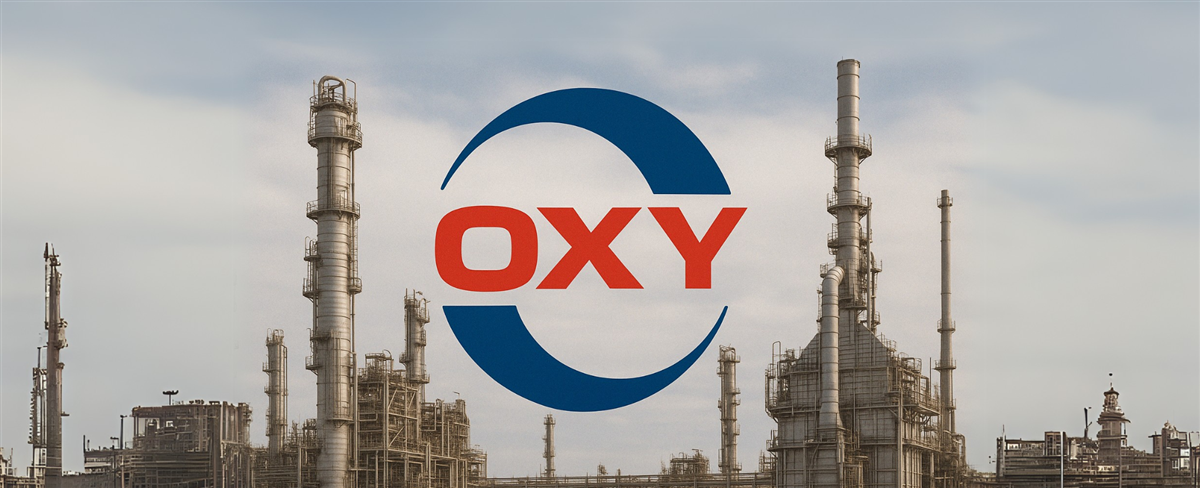|
|
|

|
|||||

|
|

Occidental Petroleum Co. (NYSE: OXY) is known for being one of the largest oil and gas producers in the United States, as well as being Warren Buffet’s favorite stock in the energy sector based on his Berkshire Hathaway Inc. (NYSE: BRK.A) (NYSE: BRK.B) cumulative holdings of 28.2% ownership in the company.
Occidental is the largest oil and gas producer in the Permian Basin, located in West Texas. In the Permian, Occidental competes with energy sector giants Exxon Mobil Co. (NYSE: XOM) and Chevron Co. (NYSE: CVX).
Occidental’s onshore operations are concentrated in two key regions: the Permian Basin and the Rockies. A closer look at these areas offers investors more nuanced insights, helping them make better-informed decisions, especially in times of heightened market volatility.
The Permian Basin spans approximately 75,000 square miles and is renowned for its rich, multi-layered shale formations across West Texas, southeastern New Mexico, and parts of the Delaware Basin. It serves as the cornerstone of Occidental Petroleum’s upstream operations, which focus on oil exploration and production. A major expansion came with the company’s $12.4 billion acquisition of CrownRock, adding 94,000 acres in the Midland Basin and boosting capacity by over 170,000 barrels of oil equivalent per day (BOE/d).
Currently, Occidental operates 1.5 million net acres of unconventional wells across the Delaware and Midland Basins and manages 1.4 million net acres of conventional wells, many of which hold significant potential for carbon capture, utilization, and storage (CCUS). Outside of the Permian, Occidental also controls 600,000 net acres and a large mineral rights position in the Rockies.
In 2024, Occidental’s production averaged 664 MBOE/d (thousand barrels of oil equivalent per day) in the Permian Basin. The Rockies and other domestic regions added 310 MBOE/d, while production in the Gulf of Mexico totaled 125 MBOE/d. Across all its unconventional basins, the company successfully reduced well costs by 12% year-over-year and improved drilling cycle times by 11%.
Production ramped up significantly by the end of the year. In the fourth quarter of 2024, Occidental set a new quarterly U.S. production record at 1,463 MBOE/d. For the full year, the average realized sales price was $75.05 per barrel (42 gallons) of oil and $1.18 per thousand cubic feet (Mcf) of natural gas. As of Apr. 19, 2025, oil prices had declined to $64.68 per barrel, while natural gas prices jumped to $3.25 per Mcf. Occidental’s Oil and Gas division remained the company’s dominant revenue driver in 2024, generating $21.71 billion.
Oil wells are typically classified by how easily oil can be extracted, ranging from conventional to unconventional resources. Conventional wells—like the ones famously portrayed in The Beverly Hillbillies, where oil gushes straight from the ground—tap into highly permeable rock formations such as sandstone and limestone. These formations allow oil and gas to flow freely, making extraction possible with traditional vertical drilling methods.
Unconventional wells, on the other hand, involve oil and gas trapped in less permeable rock formations like shale, coal seams, and tight sandstone. To unlock the hydrocarbons, these resources require more advanced extraction techniques, including horizontal drilling and hydraulic fracturing (commonly known as fracking).
Occidental outlined a $7 billion to $7.2 billion capital expenditures (CapEx) plan for 2025 with a target production of 1.4 million BOE/d. The Oil and Gas segment is budgeted at $5.8 billion to $6 billion. The Permian Basin has been allocated $3.7 billion in CapEx. They will operate 24 gross drilling rigs (16 net rigs) and are forecast to bring 500 to 550 new wells online.
The largest portion of CapEx will be applied towards drilling, completing, and equipping new wells to get them ready for production. For the Rockies, Occidental plans to spend $800 million on CapEx, operating 3 gross rigs (2 net rigs) to bring 100 to 120 wells online.
Even with oil currently trading at $64.88 per barrel, Occidental remains well above its breakeven costs. The company’s largest inventory segment consists of approximately 8,000 onshore well locations with breakeven prices below $60 per barrel. Of those, around 6,000 wells have breakeven points under $50, and 3,600 locations can operate profitably with oil prices below $40 per barrel.
The majority of these cost-efficient wells are located in the Permian Basin. In 2024, Occidental improved its average breakeven cost by 6% year-over-year, reflecting continued operational efficiencies.
Before you make your next trade, you'll want to hear this.
MarketBeat keeps track of Wall Street's top-rated and best performing research analysts and the stocks they recommend to their clients on a daily basis.
Our team has identified the five stocks that top analysts are quietly whispering to their clients to buy now before the broader market catches on... and none of the big name stocks were on the list.
They believe these five stocks are the five best companies for investors to buy now...
The article "Occidental Petroleum: Unpacking Its Onshore Oil & Gas Strength" first appeared on MarketBeat.
| Apr-23 | |
| Apr-23 | |
| Apr-23 | |
| Apr-23 | |
| Apr-23 | |
| Apr-23 | |
| Apr-23 | |
| Apr-23 | |
| Apr-23 | |
| Apr-23 | |
| Apr-23 | |
| Apr-23 | |
| Apr-23 | |
| Apr-23 | |
| Apr-23 |
Join thousands of traders who make more informed decisions with our premium features. Real-time quotes, advanced visualizations, backtesting, and much more.
Learn more about FINVIZ*Elite